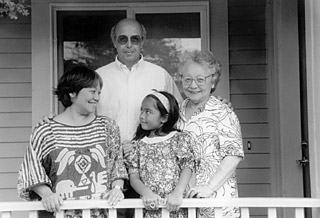Home care, as a distinct occupation, emerged in the Great Depression both as work relief for New York’s unemployed Black women who had previously worked as domestic servants, and as an alternative to fiscally strained public hospitals. 1 The New Deal employed what at the time were called visiting homemakers directly through the Works Progress Administration (WPA) to help poor families and individuals with medical emergencies, chronic illness, and health problems surrounding old age, while curtailing the costs of institutionalization. The WPA also initiated programs to move such people out of hospitals and give them the necessary assistance to become ‘independent’ at home.
While New Dealers developed home care as a form of relief for both providers and receivers, they ignored it as an occupation. When the Democratic Congress passed old-age insurance, unemployment benefits, collective bargaining, minimum wages, and other labor standards, it excluded nurse companions, homemakers, and in-home workers from coverage. 2 Even when Congress amended the FLSA in 1974 to include domestic workers, it specifically exempted home care workers from coverage. The Supreme Court reaffirmed this exclusion in 2007.
After World War II, New York City’s Department of Welfare offered the most successful model of a public program for home health care services. It directly employed home aids, still called homemakers, worked closely with private social welfare agencies, secured federal funding, and extended the service from child to elder care. Home care further grew as both an expansion of the hospital and as an attempt to alleviate the number of charity and chronic cases overburdening hospitals. The Great Society, the domestic programs initiated by President Lyndon B. Johnson in the 1960s, enhanced home care through new services for the aged and poor, especially Medicare and Medicaid. Specifically, War on Poverty training programs sought to channel poor women into these jobs. Recruited from families on public assistance, homemakers cared for others from the same social class.
From 1945 until the 1970s, these workers belonged to a booming municipal public sector, despite their actual workplaces being private homes. New York defined them as public employees able to receive benefits with limited Civil Service protections. Unlike a typical domestic, city homemakers officially worked a forty-hour week and received health insurance, sick leave, and paid vacation. In the early 1960s, the City employed 263 full-time workers, covered by a collective bargaining contract with the American Federation of State, County, and Municipal Workers (AFSCME).
In the late 1960s, however, New York State started to change course as it sought to counter militant public sector unionism, the welfare rights movement, and growing public welfare spending. After 1969, it began to privatize the home aide workforce, reclassifying workers as independent contractors. A new part-time and casualized employment structure emerged. Renamed home health attendants, their numbers soared to over 12,000 by the mid 1970s.
- This narrative appears in another from in our book, Caring for America: Home Health Workers Under the Shadow of the Welfare State, forthcoming from Oxford University Press.[↑]
- Mary Poole, The Segregated Origins of Social Security: African Americans and the Welfare State (Chapel Hill: University of North Carolina Press, 2006).[↑]



